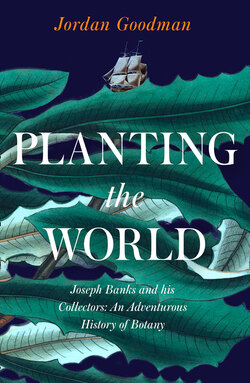Читать книгу Planting the World - Jordan Goodman - Страница 20
Preface
ОглавлениеBetween 1777 and 1779 Joseph Banks’s life changed in several important ways that set a pattern for the rest of his days. In 1777, he moved with his sister, Sarah Sophia, into his permanent home in Soho Square. It was a large house with enough space to accommodate his domestic life and his professional interests. His great library focused principally on natural history and its associated texts, manuscripts, drawings and specimens. In 1778, Banks was elected President of the Royal Society after having been a Fellow for just over a decade; he was only thirty-five years old. In 1779, he married Dorothea Huggesen, who moved into Soho Square with him and Sarah Sophia. In the same year, Banks leased and subsequently bought Spring Grove, a property with extensive grounds in Heston, Middlesex. Over time Banks had gardens laid out, and greenhouses and hothouses built. Produce grown there was sent to Soho Square and this was where Banks carried out a number of important horticultural experiments. Banks also began what became an annual pilgrimage to manage his Lincolnshire estates, centred on his country home at Revesby Abbey, where he, his wife and sister would spend every September and October.
In contrast to the English focus of his domestic life in London and Lincolnshire, Banks was being drawn in other, more outward-looking and global directions. In 1776, Francis Masson, Kew’s first official collector since 1772, became Banks’s direct responsibility. Masson had already been to the Cape of Good Hope collecting for the royal gardens at Kew, and he was on his way to Madeira to continue his assignment when Banks took over his direction. During the next three decades, while Masson travelled through the Atlantic region, Banks handled all his preparations, telling him where and what to collect, arranging his finances and managing the receipt of his specimens for Kew.
Banks, already a wealthy man, now settled down as a county notable and the President of the Royal Society. His contact with Masson offered Banks something entirely different, something unpredictable that must have reminded him of his experiences on the Endeavour. Banks could share vicariously in the excitement of finding new plants to send to Kew, of making Kew a place where plants from all over the globe could thrive, far from their native habitats. It gave Banks, as he said himself, the greatest of pleasures, to harness the intellectual resources of Soho Square, its library and herbarium, to the practical horticultural experience and knowledge of Kew, all for the benefit of the King and his garden. Banks would continue pushing these projects into new geographic regions, whenever the opportunities arose.
These early collectors, including Masson, were mostly Scots – they were generally better trained and more knowledgeable about botany than their English counterparts. Most of these men sought out Banks rather than the other way round. They expanded their own and Banks’s geographical horizon, collecting plants in parts of the world – the Pacific Northwest, China, southwest Africa and the Coromandel Coast – whose botany was hardly known in Europe.
